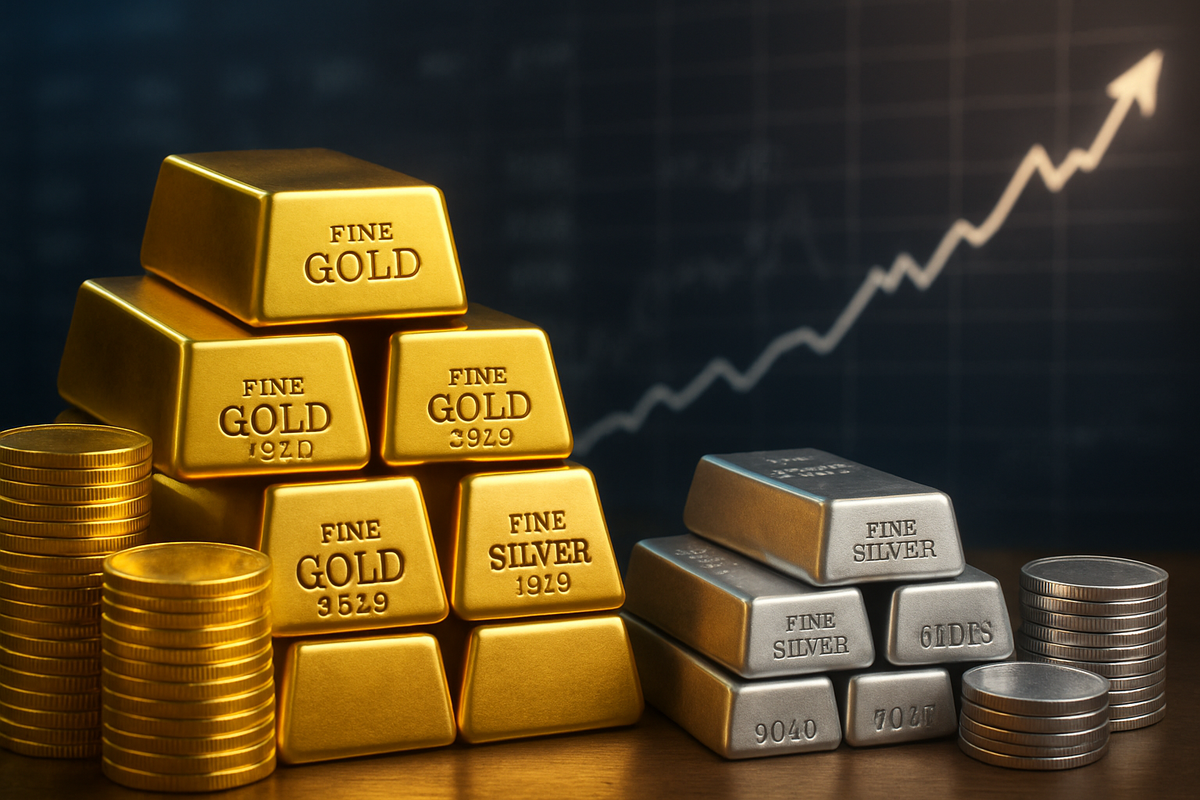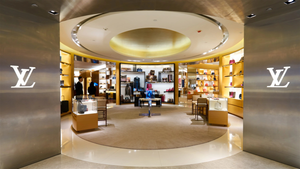
Mumbai, India – October 20, 2025 – As the festive season approaches, a remarkable financial story is unfolding, with gold and silver having delivered staggering returns of over 60% since last Diwali (November 1, 2024). This spectacular rally in precious metals stands in stark contrast to the more modest gains of the benchmark Nifty 50 and Sensex (BSE: SENSEX) indices, prompting investors to re-evaluate their portfolio strategies and highlighting the enduring appeal of safe-haven assets amidst global uncertainties. The dramatic outperformance signals a significant shift in market sentiment, with tangible assets providing a robust hedge against inflation and economic volatility.
The immediate implication of this surge is a clear reinforcement of gold and silver's traditional role as safe havens. Investors, grappling with persistent geopolitical tensions, sticky US inflation, and the anticipation of future US interest rate cuts, have flocked to these metals. This robust demand, coupled with aggressive buying by central banks globally and strong inflows into Exchange Traded Funds (ETFs), has fueled the unprecedented price appreciation, leaving equity markets trailing significantly behind.
The Shimmering Surge: A Year of Unprecedented Gains
The period between last Diwali (November 1, 2024) and today, October 20, 2025, has been nothing short of extraordinary for precious metals. Gold (24K, 10 grams) has seen its price skyrocket from approximately ₹80,560 to ₹130,690, marking a phenomenal 62.21% gain. Silver (1 kg) has been an even more stellar performer, surging from around ₹97,000 to ₹172,000, an astounding 77.32% increase. During the same timeframe, the Indian equity market, as represented by the Sensex, managed a comparatively subdued 5.82% gain, moving from 79,724.12 points to 84,363.37 points.
This timeline of events reveals a consistent upward trajectory for gold and silver, driven by a confluence of macroeconomic and geopolitical factors. Starting shortly after Diwali 2024, renewed concerns over global economic stability, escalating conflicts in various regions, and the persistent narrative of inflation pushed investors towards assets perceived as reliable stores of value. Key players in this rally include individual retail investors seeking to preserve wealth, institutional investors diversifying their portfolios, and perhaps most significantly, central banks worldwide, which have been net buyers of gold for several consecutive quarters, bolstering its demand. The initial market reaction has been one of cautious optimism for precious metals, with many analysts upgrading their price targets, while equity market participants have had to contend with capital outflows and a more challenging environment.
Silver's exceptional performance is partly attributed to its dual demand profile. Beyond its safe-haven characteristics, silver is a critical industrial metal used extensively in emerging technologies such as solar panels, electric vehicles, 5G infrastructure, and various electronics. This growing industrial demand, coupled with constrained supply, has amplified its price appreciation, making it an attractive proposition for both traditional precious metal investors and those looking to capitalize on the green energy transition.
Winners and Losers in the Precious Metals Boom
The dramatic rally in gold and silver has created clear winners and losers across various sectors. Mining companies that extract these precious metals stand to gain significantly. Companies like Hindustan Zinc (NSE: HINDZINC), a major producer of zinc, lead, and silver in India, could see boosted revenues and profits due to higher realized prices for their silver output. Similarly, global gold miners such as Barrick Gold (NYSE: GOLD) or Newmont Corporation (NYSE: NEM) would report stronger earnings, potentially leading to increased shareholder value. Junior exploration companies with promising gold and silver deposits might also find it easier to secure funding for development.
Conversely, jewelry retailers and manufacturers might face a mixed bag. While the intrinsic value of their inventory has increased, record-high prices could temper consumer demand for discretionary purchases, especially in price-sensitive markets like India, despite the strong cultural affinity for gold during festivals. Companies like Titan Company (NSE: TITAN), a leading Indian jewelry retailer, might experience shifts in sales patterns, with consumers potentially opting for lighter-weight pieces or investing in smaller quantities. Additionally, any industries heavily reliant on silver as a raw material, outside of high-growth sectors like solar, might face increased input costs, potentially squeezing profit margins.
Exchange Traded Funds (ETFs) focused on gold and silver have been major beneficiaries, attracting substantial investor inflows. Funds like the SPDR Gold Shares (NYSEARCA: GLD) or iShares Silver Trust (NYSEARCA: SLV) have seen their Net Asset Values (NAVs) surge, rewarding their investors handsomely. On the losing side, investors who were heavily concentrated in equity markets, particularly those with a low allocation to precious metals, would have seen their portfolios underperform significantly relative to the broader market gains if they didn't diversify. Furthermore, companies that borrowed heavily in gold-denominated loans or had significant unhedged exposure to falling precious metal prices would have faced considerable financial risks, though this scenario is less prevalent during a bull run.
Wider Significance: A Shift in the Global Financial Landscape
This exceptional rally in gold and silver is more than just a short-term market anomaly; it signifies a potential shift in broader industry trends and investor psychology. The sustained demand for precious metals underscores a growing global apprehension about fiat currency stability and the efficacy of traditional monetary policies in controlling inflation. This event fits into a trend of de-dollarization efforts by some nations and central banks, who are increasingly diversifying their reserves away from the US dollar and into gold.
The ripple effects are far-reaching. Competitors in the investment space, such as bond markets, might see reduced appeal if real interest rates remain low or negative, making non-yielding gold a more attractive alternative. Partners in the supply chain, from refiners to logistics providers, are likely experiencing increased activity. Regulatory bodies might also pay closer attention to the precious metals market, potentially introducing new guidelines or monitoring mechanisms to ensure market stability and prevent excessive speculation. Historically, significant rallies in gold and silver have often coincided with periods of heightened economic uncertainty, geopolitical instability, or inflationary pressures, echoing events from the 1970s oil shocks or the aftermath of the 2008 financial crisis. The current environment, characterized by persistent geopolitical flashpoints and ongoing inflationary battles, draws strong parallels to these historical precedents, reinforcing the metals' role as a crisis hedge.
Furthermore, the robust industrial demand for silver ties its performance to the global push for sustainability and technological advancement. As countries invest more in renewable energy and electric vehicles, the demand for silver in these applications is expected to remain strong, providing a fundamental floor to its price, independent of its safe-haven status. This dual demand profile makes silver particularly resilient and positions it as a critical commodity for the future economy.
What Comes Next: Navigating the Golden Path Ahead
Looking ahead, the trajectory of gold and silver will largely depend on the evolution of global economic conditions, geopolitical stability, and central bank policies. In the short term, analysts anticipate that the rapid rallies might lead to some price corrections due to profit-booking, especially if positive news emerges on inflation control or de-escalation of conflicts. However, the long-term outlook for both precious metals remains predominantly bullish, supported by fundamental drivers. Continued central bank buying, persistent inflation fears, and sustained industrial demand for silver are likely to provide a strong underpinning for prices.
Potential strategic pivots for investors include maintaining a diversified portfolio with a healthy allocation to precious metals, perhaps reviewing and rebalancing allocations to align with risk tolerance and investment goals. Market opportunities may emerge during any short-term dips, allowing investors to enter or increase their positions at more favorable prices. Challenges could include increased market volatility and the difficulty of timing entries and exits in a rapidly moving market.
Several scenarios could unfold. In a scenario of continued global instability and high inflation, gold and silver could continue their upward march, potentially reaching new all-time highs. Conversely, a rapid resolution of geopolitical tensions and a decisive victory against inflation by central banks could lead to a more significant correction. A third scenario involves a "new normal" where precious metals maintain elevated price levels, reflecting a permanently altered global economic landscape with higher baseline inflation and ongoing geopolitical fragmentation. Investors should closely monitor inflation data, central bank communications, and geopolitical developments to adapt their strategies.
Wrapping Up: A New Era for Precious Metals
The past year has undeniably been a landmark period for gold and silver, with their astounding 60%+ rally since last Diwali serving as a powerful testament to their enduring value proposition. This outperformance against the Sensex underscores a critical takeaway: in an increasingly uncertain world, tangible assets like precious metals offer a vital hedge against volatility, inflation, and geopolitical risks. For investors, the event highlights the importance of diversification and the strategic role that gold and silver can play in preserving and growing wealth.
Moving forward, the market will be keenly watching for several key indicators. The actions of major central banks, particularly the US Federal Reserve, regarding interest rates will be crucial. Any shifts in global geopolitical landscapes, especially in conflict zones, will also influence safe-haven demand. Furthermore, the pace of technological adoption and its impact on industrial demand for silver will be a significant factor. While some short-term volatility is expected, the fundamental drivers supporting a bullish long-term outlook for precious metals appear robust. Investors are advised to conduct thorough due diligence and consider their individual financial goals before making investment decisions in this dynamic environment.
This content is intended for informational purposes only and is not financial advice





